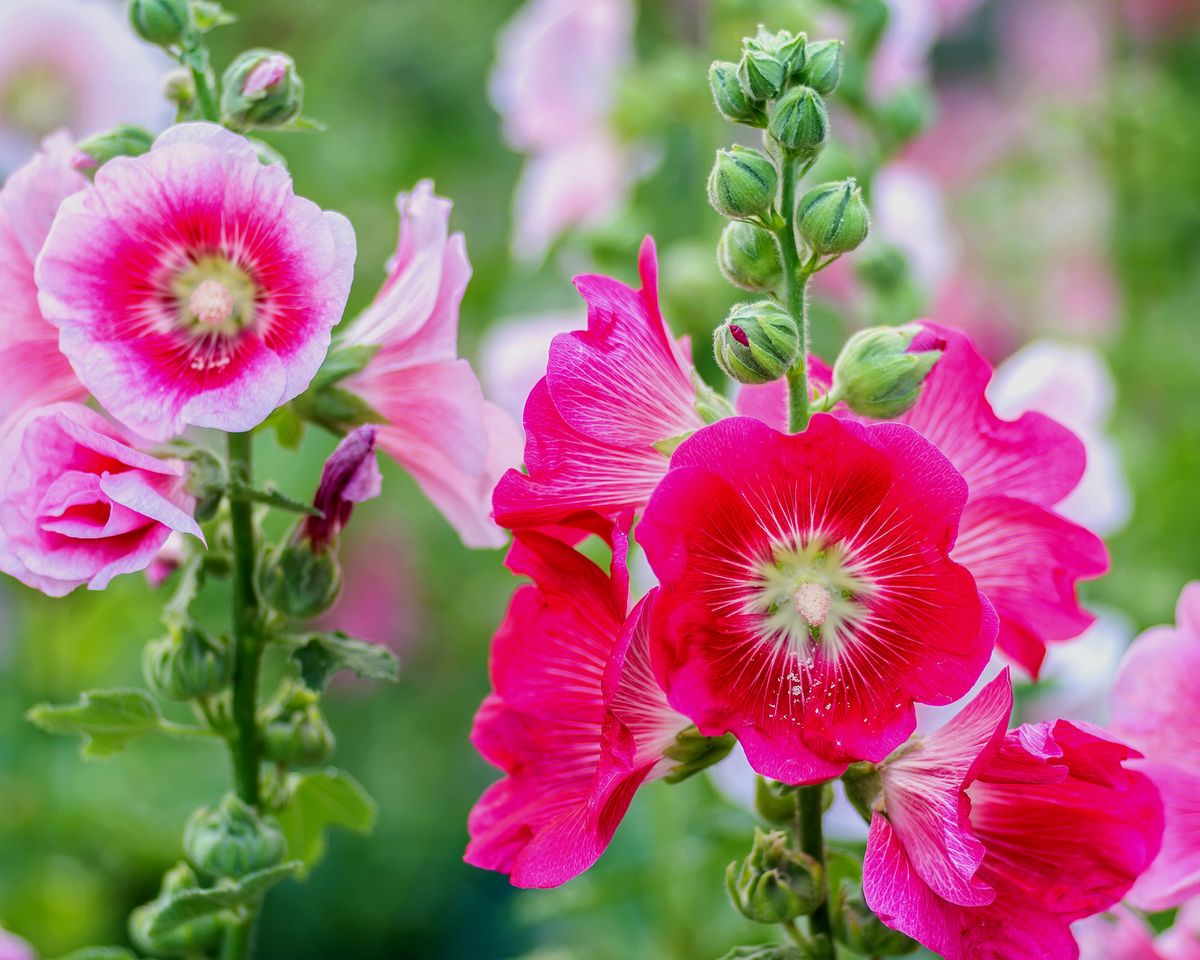The hollyhock, a stately and captivating flower, has graced gardens for centuries. Its towering spires, adorned with vibrant blooms, create a breathtaking spectacle that evokes a sense of nostalgia and elegance. This article delves into the world of hollyhocks, exploring their history, characteristics, cultivation, and significance in various cultures.
Origins and Early Cultivation
The hollyhock, scientifically known as Alcea rosea, is believed to have originated in Asia, particularly in China. It was introduced to Europe during the Middle Ages, where it quickly became a popular garden plant. The name “hollyhock” is thought to derive from the Old English word “holhhoc,” meaning “holy mallow,” reflecting its association with sacred places and its medicinal uses.
Symbolism and Folklore
:max_bytes(150000):strip_icc()/hollyhock-alcea-growing-guide-5200999-hero-a91fc11a5dfd41a192fd4ce8d08e3f34.jpg)
Throughout history, hollyhocks have been imbued with symbolic meaning and have played a role in various folklore traditions.
Symbolism
Ambition and Aspiration: The tall stature of hollyhocks has often been associated with ambition and the striving for lofty goals.
Folklore
Love and Romance: In Victorian times, hollyhocks were often given as tokens of love and affection.
Botanical Characteristics

Hollyhocks are biennial or short-lived perennial plants that belong to the Malvaceae family. They are characterized by their tall, erect stems, which can reach heights of 6 to 8 feet or more. The stems are covered with velvety hairs and bear large, heart-shaped leaves. The most striking feature of hollyhocks is their showy flowers, which bloom in a wide range of colors, including pink, red, white, yellow, and purple. The flowers are typically single or double and can be either flat or ruffled.
Cultivation and Care
Hollyhocks are relatively easy to grow, but they do require some specific care to thrive.
Planting
Timing: Hollyhocks are best planted in the spring after the last frost.
Watering
Regular Watering: Water hollyhocks regularly, especially during dry periods.
Fertilizing

Staking
Common Pests and Diseases
Hollyhocks can be susceptible to a few pests and diseases.
Pests
Hollyhock Weevil: This small beetle feeds on the leaves and buds of hollyhocks.
Diseases
:strip_icc()/alcea-rosea-old-barnyard-hollyhock-ca629344-60ece34452c94844939ad381390abfc1.jpg)
Rust: A fungal disease that causes brown spots on the leaves.
Design Ideas
Hollyhocks can be used in a variety of garden settings. Here are a few ideas:
Backdrops
Fences and Walls: Plant hollyhocks along fences or walls to create a vibrant vertical accent.
Mixed Borders

Cottage Gardens: Combine hollyhocks with other cottage garden favorites, such as roses, peonies, and foxgloves.
Harvesting and Drying
Hollyhock flowers can be harvested for use in dried arrangements. To dry the flowers, hang them upside down in a warm, dry place.
The hollyhock, with its timeless beauty and rich history, continues to captivate gardeners and flower enthusiasts alike. Whether planted in formal gardens or informal cottage gardens, hollyhocks add a touch of elegance and charm to any landscape. By understanding their cultural significance, botanical characteristics, and cultivation requirements, we can appreciate and enjoy these magnificent flowers to the fullest.
Hollyhock Plant
:max_bytes(150000):strip_icc()/hollyhock-alcea-growing-guide-5200999-hero-a91fc11a5dfd41a192fd4ce8d08e3f34.jpg?ssl=1)